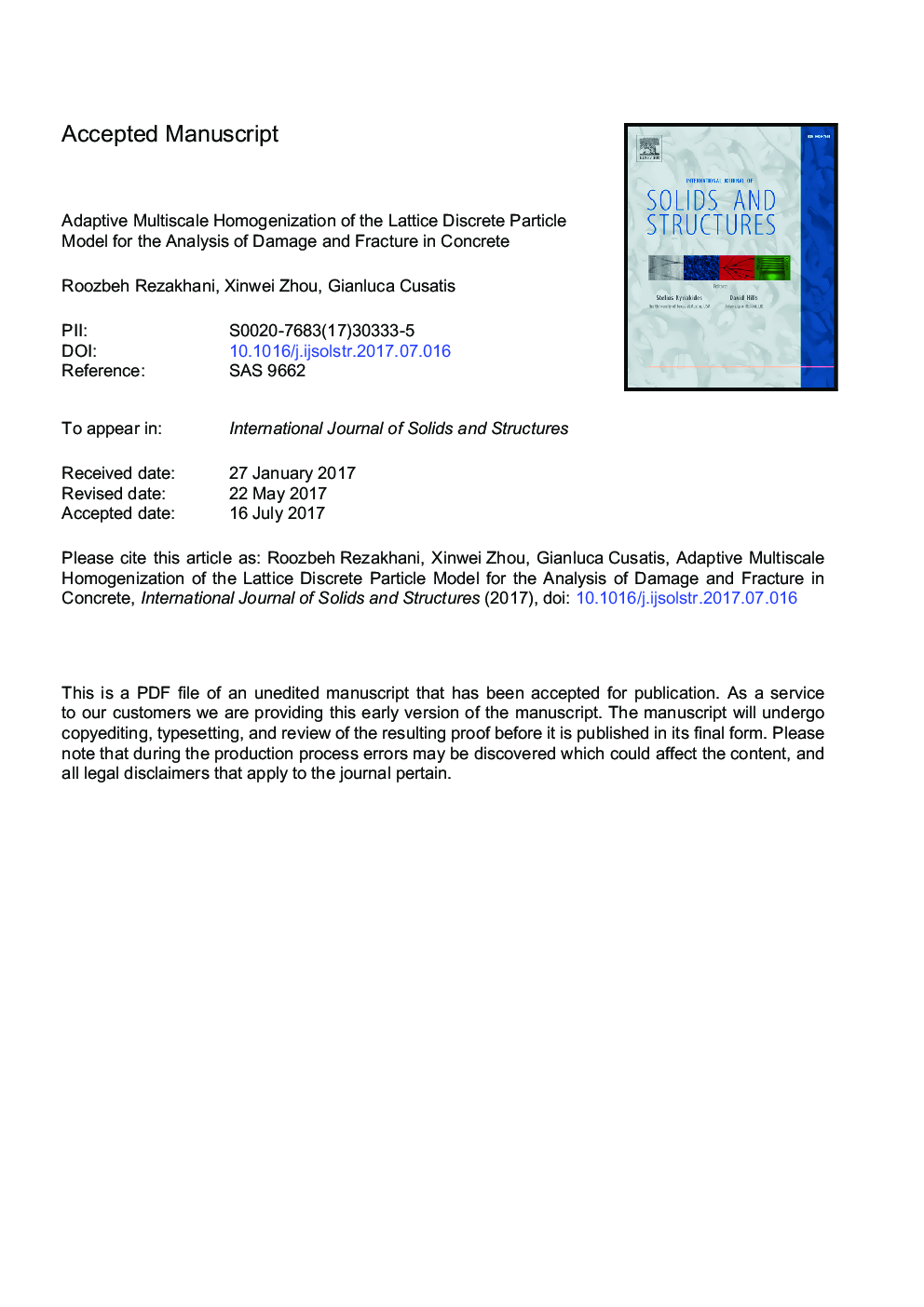| Article ID | Journal | Published Year | Pages | File Type |
|---|---|---|---|---|
| 4922423 | International Journal of Solids and Structures | 2017 | 33 Pages |
Abstract
This paper presents a new adaptive multiscale homogenization scheme for the simulation of damage and fracture in concrete structures. A two-scale homogenization method, coupling meso-scale discrete particle models to macro-scale finite element models, is formulated into an adaptive framework. A continuum multiaxial failure criterion for concrete is calibrated on the basis of fine-scale simulations, and it serves as the adaptive criterion in the multiscale framework. Thus, in this approach, simulations start without assigning any material Representative Volume Element (RVE) to the macro-scale finite elements. The finite elements that meet the adaptive criterion and must be entered into the multiscale homogenization framework are detected on the fly. This leads to a substantial reduction of the computational cost especially for loading conditions leading to damage localization in which only a small portion of the FE mesh is enriched with the homogenized RVE. Several numerical simulations are carried out to investigate the capability of the developed adaptive homogenization method. In addition, a detailed study on the computational cost is performed.
Related Topics
Physical Sciences and Engineering
Engineering
Civil and Structural Engineering
Authors
Roozbeh Rezakhani, Xinwei Zhou, Gianluca Cusatis,
